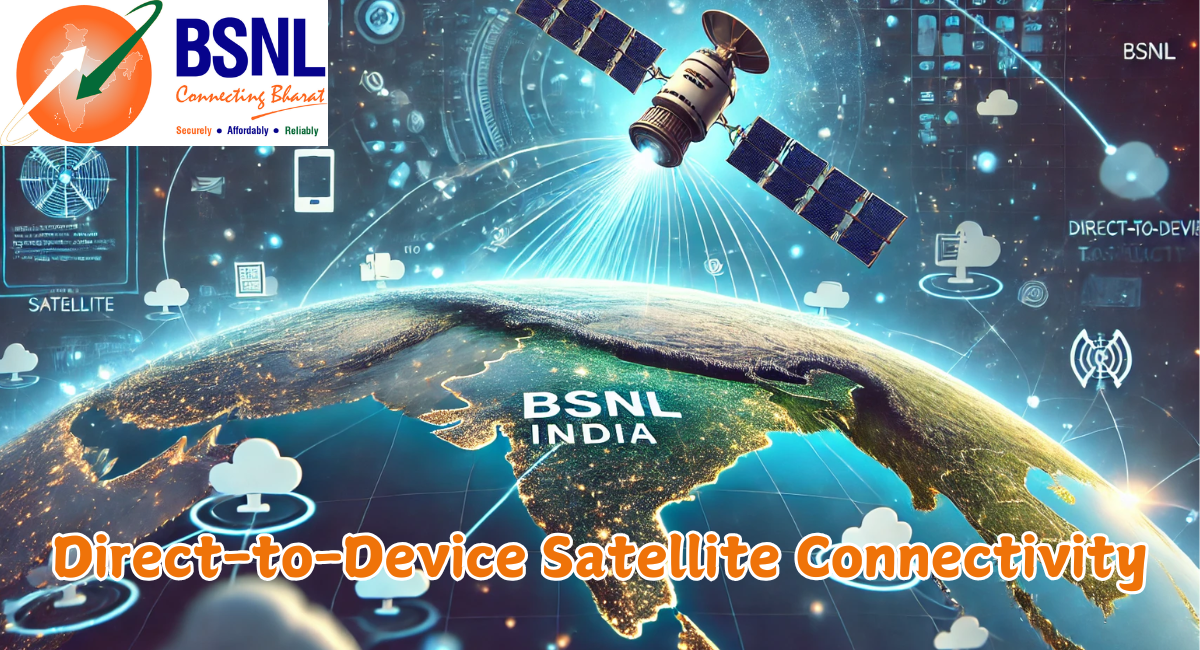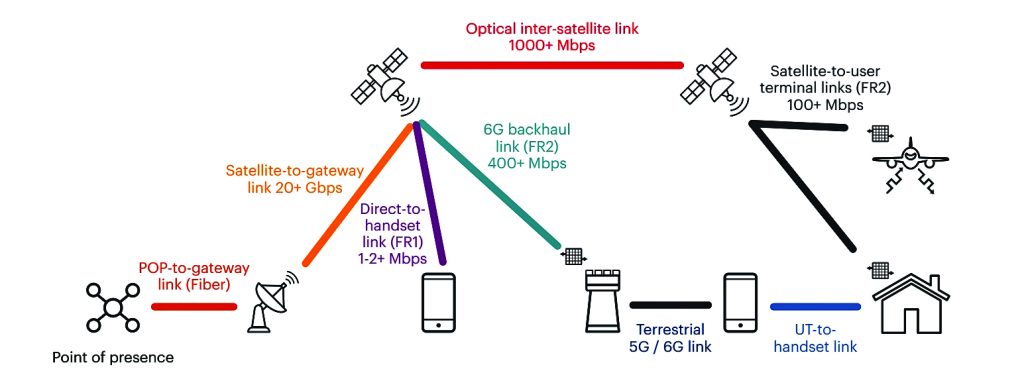
A Game-Changer for Seamless Communication
In a landmark move, Bharat Sanchar Nigam Limited (BSNL) has completed successful trials of its Direct-to-Device Satellite Connectivity technology in collaboration with global satellite communication firm Viasat. This breakthrough promises to revolutionize connectivity in India by enabling mobile phones, smartwatches, and even vehicles to connect directly to satellite networks without relying on traditional mobile towers or wired infrastructure.
Seamless Connectivity Anytime, Anywhere
The D2D technology, compatible with both Android and iOS devices, is set to ensure that users can stay connected even in the most remote areas or during network outages. This new satellite-based solution offers uninterrupted coverage across regions where traditional networks struggle, such as rural areas, mountainous regions, and disaster-prone zones. This is a major development, especially for India’s vast rural population that has often faced challenges in accessing reliable mobile networks.

Image credits:Io T Business News
For millions of BSNL users, this could mean a drastic improvement in their communication experience. Whether it’s sending messages, making phone calls, or using smart gadgets like smartwatches, the reliance on terrestrial mobile towers will be significantly reduced. With satellite-based connectivity, BSNL is setting a new standard for reliable and widespread communication, outpacing competitors like Reliance Jio and Bharti Airtel in terms of coverage innovation.
How Does Direct-to-Device Technology Work?
The Direct-to-Device service operates through Non-Terrestrial Networks (NTN), which means devices connect directly to satellites in space. Unlike traditional mobile networks that rely on terrestrial infrastructure, satellite communication eliminates the need for physical towers or cables. This technology is designed not only for personal communication but also for smart devices, making it a perfect fit for IoT (Internet of Things) applications such as connected cars, smartwatches, and other smart gadgets.

Image credits: mpdigest.com
In the trial phase, BSNL and Viasat achieved two-way messaging and SOS communication on a commercial Android smartphone using satellite connectivity. Most notably, they successfully made a phone call using a satellite located 36,000 kilometers away. This unprecedented success marks a significant milestone for BSNL, showing the world that uninterrupted communication, even in the face of network challenges, is within reach.
A Game-Changer for Rural India and Remote Areas
India is a country of geographical diversity, with many areas difficult to access through traditional mobile towers. Rural and remote regions, in particular, have long struggled with poor network coverage, creating a digital divide. BSNL’s D2D technology could bridge this gap by providing seamless, reliable communication regardless of location. Whether it’s a farmer in a remote village or a traveler in a mountainous region, this new service ensures they remain connected.

Moreover, in times of natural disasters when terrestrial networks often fail, satellite-based communication can be a lifeline. SOS messaging through satellite networks will enable rescue operations to be coordinated more effectively, enhancing disaster response efforts and saving lives.
Big Challenge for Jio and Airtel
BSNL’s collaboration with Viasat has set a new precedent in India’s telecommunications sector. As competitors like Reliance Jio and Bharti Airtel focus on expanding their 5G networks, BSNL’s leap into satellite communication poses a new challenge. Unlike 5G, which is reliant on dense terrestrial infrastructure, D2D technology promises to provide nationwide coverage without the same level of investment in physical towers. This could level the playing field, giving BSNL a competitive edge, especially in areas where 5G rollouts are slow or impractical.

With a focus on seamless communication in underserved and rural areas, BSNL’s D2D technology also aligns with India’s digital inclusion goals. By addressing the network challenges that 5G might not fully resolve, BSNL has positioned itself as a key player in India’s telecom revolution.
Opportunities for Future Innovation
The successful trials mark only the beginning of what is possible with satellite-based D2D communication. As IoT continues to grow, devices ranging from smartwatches to connected cars will benefit from BSNL’s satellite network. The potential for future innovations, such as fully connected cities, real-time data communication for agriculture, and remote medical assistance, could be realized more quickly with this technology.
For startups, this opens up vast opportunities to create satellite-based applications, develop rural connectivity solutions, and build new services around smart gadgets that require reliable, continuous connectivity.
BSNL’s Direct-to-Device technology, in partnership with Viasat, has the potential to reshape the Indian telecom landscape. Offering seamless connectivity where traditional networks fail, it’s a masterstroke that poses a significant challenge to industry giants like Reliance Jio and Bharti Airtel. With its sights set on revolutionizing communication in rural and remote areas, BSNL has positioned itself as a pioneer in India’s next wave of telecommunications growth.
This is not just a victory for BSNL, but for millions of users across India who will soon experience the benefits of reliable, uninterrupted connectivity, no matter where they are.
IS360 Can be Reached at
Sharing is caring!

